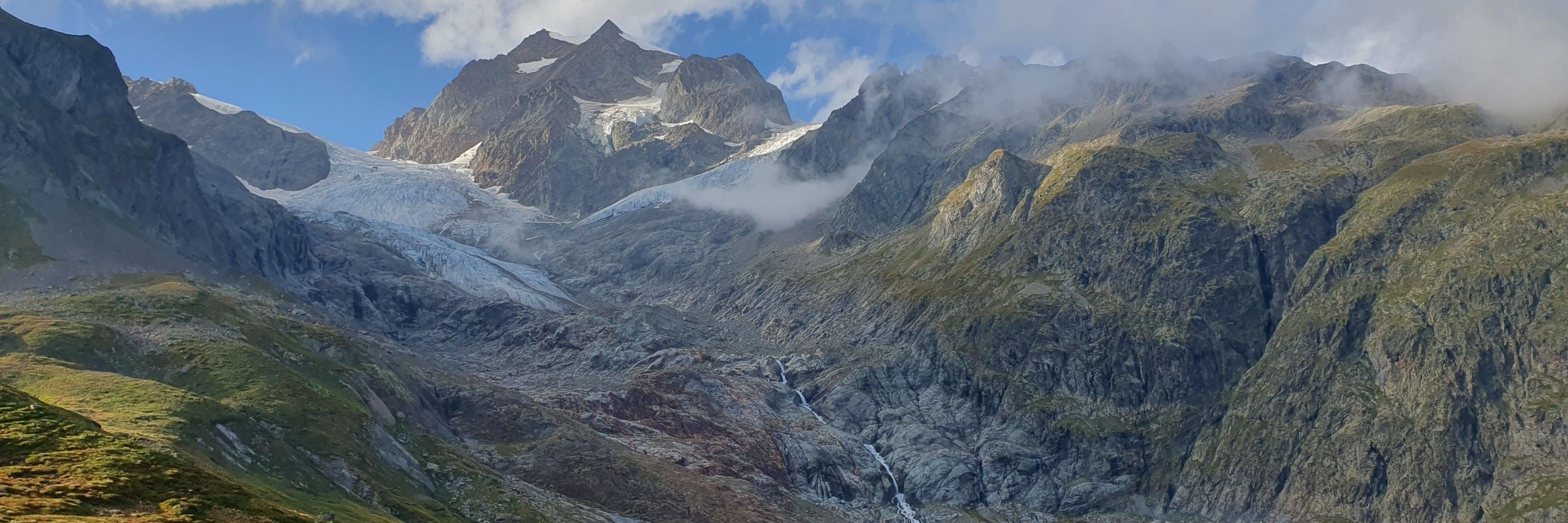
We visualized perceptual changes from simulated stimulations in model face-selective regions. This results in face-related changes: additional faces appear (#1), face becomes larger (#1161), or specific face-features get enhanced (#533).

We visualized perceptual changes from simulated stimulations in model face-selective regions. This results in face-related changes: additional faces appear (#1), face becomes larger (#1161), or specific face-features get enhanced (#533).
With a slightly different site-selection criterion, stimulation shifted behavior above baseline in monkey 1 (Cohen’s d=0.67), though our model was not able to accurately predict monkey behavior anymore.

With a slightly different site-selection criterion, stimulation shifted behavior above baseline in monkey 1 (Cohen’s d=0.67), though our model was not able to accurately predict monkey behavior anymore.
Model-predicted behavioral shifts correlated with stimulation-evoked behavioral shifts in both monkeys. While predicted model responses were strong, monkey behavior was not shifted above baseline.

Model-predicted behavioral shifts correlated with stimulation-evoked behavioral shifts in both monkeys. While predicted model responses were strong, monkey behavior was not shifted above baseline.
We generate image sequences that smoothly modulate neural activity along a stimulation site’s tuning dimension. This links visual input to the direction of activation changes resulting from microstimulation (Papale et al. 2024: www.biorxiv.org/content/10.1...)

We generate image sequences that smoothly modulate neural activity along a stimulation site’s tuning dimension. This links visual input to the direction of activation changes resulting from microstimulation (Papale et al. 2024: www.biorxiv.org/content/10.1...)
1. Map the in-silico cortical sheet of a topographic model to the monkey cortex.
2. Optimize stimulation parameters by prototyping experiments in the model.
3. Only test those parameters in-vivo that are predicted to yield the largest behavioral effects.

1. Map the in-silico cortical sheet of a topographic model to the monkey cortex.
2. Optimize stimulation parameters by prototyping experiments in the model.
3. Only test those parameters in-vivo that are predicted to yield the largest behavioral effects.
Visual prosthetics in early visual areas can evoke simple percepts (letters), but they are limited by 1. electrode count and 2. low-level features. We target high-level cortex to elicit percepts of more complex objects.

Visual prosthetics in early visual areas can evoke simple percepts (letters), but they are limited by 1. electrode count and 2. low-level features. We target high-level cortex to elicit percepts of more complex objects.
We visualized perceptual changes from simulated stimulations in model face-selective regions. This results in face-related changes: additional faces appear (#1), face becomes larger (#1161), or specific face-features get enhanced (#533).

We visualized perceptual changes from simulated stimulations in model face-selective regions. This results in face-related changes: additional faces appear (#1), face becomes larger (#1161), or specific face-features get enhanced (#533).
With a slightly different site-selection criterion, stimulation shifted behavior above baseline in monkey 1 (Cohen’s d=0.67), though our model was not able to accurately predict monkey behavior anymore.

With a slightly different site-selection criterion, stimulation shifted behavior above baseline in monkey 1 (Cohen’s d=0.67), though our model was not able to accurately predict monkey behavior anymore.
Model-predicted behavioral shifts correlated with stimulation-evoked behavioral shifts in both monkeys. While predicted model responses were strong, monkey behavior was not shifted above baseline.

Model-predicted behavioral shifts correlated with stimulation-evoked behavioral shifts in both monkeys. While predicted model responses were strong, monkey behavior was not shifted above baseline.
We generate image sequences that smoothly modulate neural activity along a stimulation site’s tuning dimension. This links visual input to the direction of activation changes resulting from microstimulation (Papale et al. 2024: www.biorxiv.org/content/10.1...)

We generate image sequences that smoothly modulate neural activity along a stimulation site’s tuning dimension. This links visual input to the direction of activation changes resulting from microstimulation (Papale et al. 2024: www.biorxiv.org/content/10.1...)
1. Map the in-silico cortical sheet of a topographic model to the monkey cortex.
2. Optimize stimulation parameters by prototyping experiments in the model.
3. Only test those parameters in-vivo that are predicted to yield the largest behavioral effects.

1. Map the in-silico cortical sheet of a topographic model to the monkey cortex.
2. Optimize stimulation parameters by prototyping experiments in the model.
3. Only test those parameters in-vivo that are predicted to yield the largest behavioral effects.
Visual prosthetics in early visual areas can evoke simple percepts (letters), but they are limited by 1. electrode count and 2. low-level features. We target high-level cortex to elicit pecepts of more complex objects.

Visual prosthetics in early visual areas can evoke simple percepts (letters), but they are limited by 1. electrode count and 2. low-level features. We target high-level cortex to elicit pecepts of more complex objects.



Here, the spatial loss is based on the difference between a layer's unit activations and a blurred (/low-pass filtered) version of it.

Here, the spatial loss is based on the difference between a layer's unit activations and a blurred (/low-pass filtered) version of it.
First, very happy to present our work on TopoLM as an oral, here with
@neilrathi.bsky.social
initial thread: bsky.app/profile/hann...
paper: doi.org/10.48550/arX...
code: github.com/epflneuroailab

First, very happy to present our work on TopoLM as an oral, here with
@neilrathi.bsky.social
initial thread: bsky.app/profile/hann...
paper: doi.org/10.48550/arX...
code: github.com/epflneuroailab
@neil_rathi
I will present our #ICLR2025 Oral paper on TopoLM, a topographic language model!
Oral: Friday, 25 Apr 4:18 p.m. (session 4C)
Poster: Friday, 25 Apr 10 a.m. --> Hall 3 + Hall 2B Paper: arxiv.org/abs/2410.11516
Code and weights: github.com/epflneuroailab

@neil_rathi
I will present our #ICLR2025 Oral paper on TopoLM, a topographic language model!
Oral: Friday, 25 Apr 4:18 p.m. (session 4C)
Poster: Friday, 25 Apr 10 a.m. --> Hall 3 + Hall 2B Paper: arxiv.org/abs/2410.11516
Code and weights: github.com/epflneuroailab

